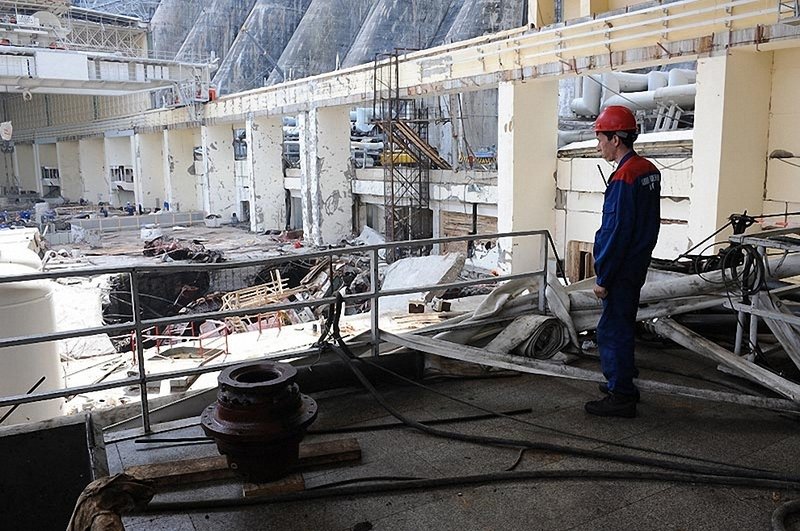|
|
Renovation Work At The Sayan-Shushenskaya GES, Russia
|
On 22 June 1941, Nazi Germany broke the non-aggression treaty and invaded the Soviet Union with the largest and most powerful invasion force in human history, opening the largest theater of the Second World War. Although the German army had considerable success early on, their onslaught was halted in the Battle of Moscow. Subsequently the Germans were dealt major defeats first at the Battle of Stalingrad in the winter of 1942–43, and then in the Battle of Kursk in the summer of 1943. Another German failure was the Siege of Leningrad, in which the city was fully blockaded on land between 1941–44 by German and Finnish forces, suffering starvation and more than a million deaths, but never surrendering. Under Stalin's administration and the leadership of such commanders as Georgy Zhukov and Konstantin Rokossovsky, Soviet forces drove through Eastern Europe in 1944–45 and captured Berlin in May 1945. In August 1945 the Soviet Army ousted Japanese from China's Manchukuo and North Korea, contributing to the allied victory over Japan.
The 1941–45 period of World War II is known in Russia as the Great Patriotic War. In this conflict, which included many of the most lethal battle operations in human history, Soviet military and civilian deaths were 10.6 million and 15.9 million respectively, accounting for about a third of all World War II casualties. The full demographic loss to the Soviet peoples was even greater. The Soviet economy and infrastructure suffered massive devastation but the Soviet Union emerged as an acknowledged superpower.
The Red Army occupied Eastern Europe after the war, including East Germany. Dependent socialist governments were installed in the Eastern bloc satellite states. Becoming the world's second nuclear weapons power, the USSR established the Warsaw Pact alliance and entered into a struggle for global dominance, known as the Cold War, with the United States and NATO. The Soviet Union exported its Communist ideology to newly formed People's Republic of China and North Korea, and later into Cuba and many other countries. Significant amounts of the Soviet resources were allocated in aid to the other socialist states.
After Stalin's death and a short period of collective rule, new leader Nikita Khrushchev denounced the cult of personality of Stalin and launched the policy of de-Stalinization. Penal labor system was reformed and many prisoners were released and rehabilitated (lots of them posthumously). The general easement of repressive policies became known later as the Khrushchev thaw. At the same time, tensions with the United States heightened when the two rivals clashed over the deployment of the U.S. Jupiter missiles in Turkey and Soviet missiles in Cuba.
|
|









